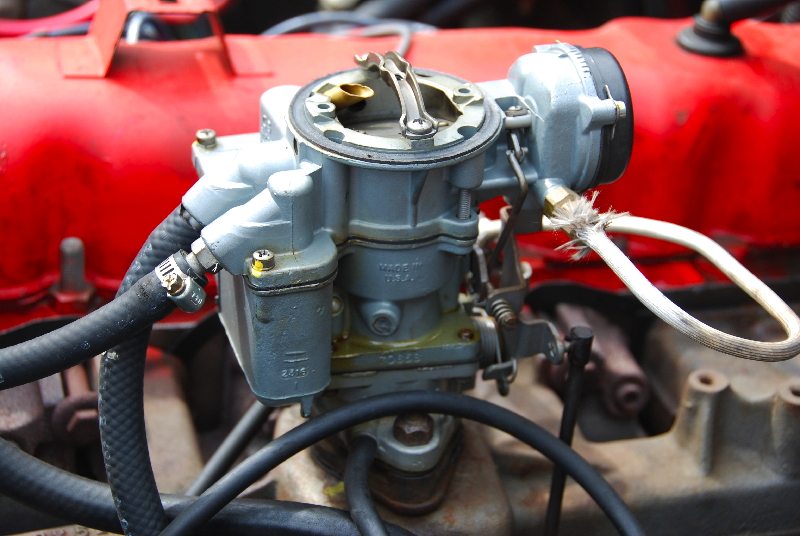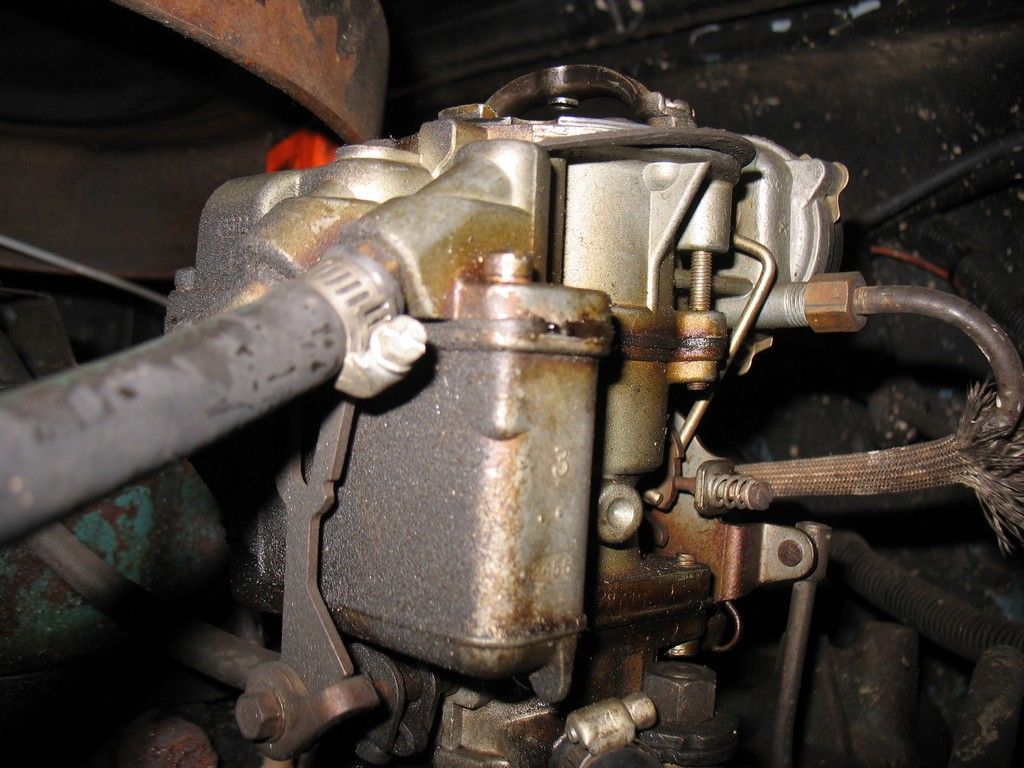I've got a Carter YF 1bbl on my Jeep's 232. I also have a spare YF. Earlier this fall I had to swap the spare onto the Jeep. What I discovered is that the two carburetors are different. My spare has a language assembly on the side of the bowl that opens and closes the bowl vent? Whereas the other YF doesn't. The other significant difference is that the manifold vacuum source I connect the PCV hose to are different sizes. My original carb has a 1/8" nipple and the spare has a 3/8".
This larger size has a big impact on how well the PCV system works and I'm considering whether or not I could drill out the hole on my original carburetor and insert a piece of 3/8" steel tube. I have not yet looked closely at the base of the carb to see how feasible it would be to drill, haven't measured tube or drill sizes, and don't really want to take the working carb off the Jeep to compare if I don't have too.
Our other vehicles are in need of repair and the old CJ is currently primary transportation. However, it being what it is, it won't run indefinitely without some maintenance. In the last month I've gone from 16mpg down to 11. Hence my efforts to get the original carb rebuilt. I'm simultaneously pursuing the performance loss with other efforts, but having a fresh carb rebuild is one of those.
Is anyone else aware of these differences between YF models? Got any advice for me about the port size?
Thanks,
Dave
This larger size has a big impact on how well the PCV system works and I'm considering whether or not I could drill out the hole on my original carburetor and insert a piece of 3/8" steel tube. I have not yet looked closely at the base of the carb to see how feasible it would be to drill, haven't measured tube or drill sizes, and don't really want to take the working carb off the Jeep to compare if I don't have too.
Our other vehicles are in need of repair and the old CJ is currently primary transportation. However, it being what it is, it won't run indefinitely without some maintenance. In the last month I've gone from 16mpg down to 11. Hence my efforts to get the original carb rebuilt. I'm simultaneously pursuing the performance loss with other efforts, but having a fresh carb rebuild is one of those.
Is anyone else aware of these differences between YF models? Got any advice for me about the port size?
Thanks,
Dave








